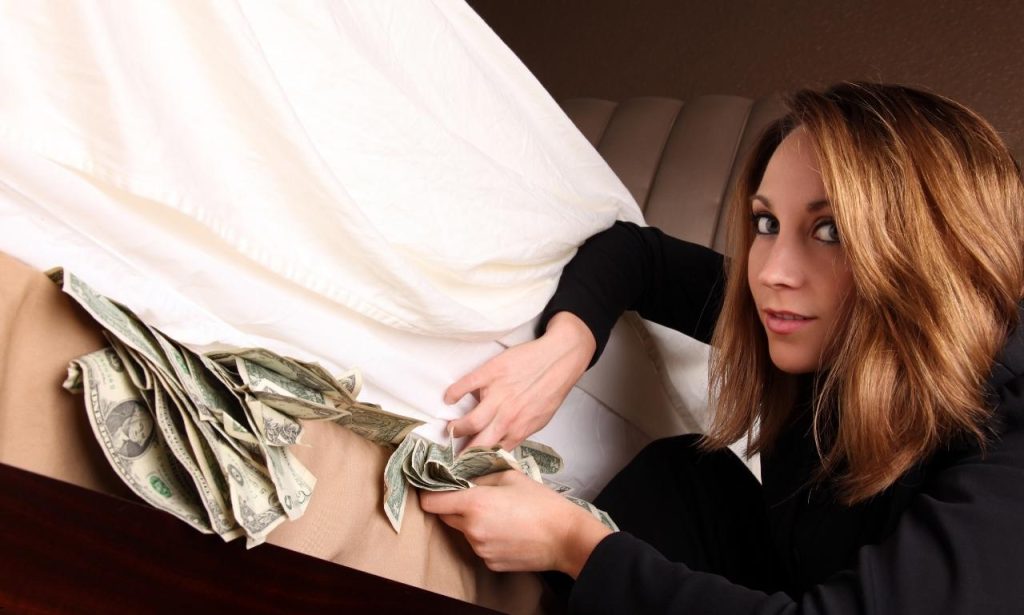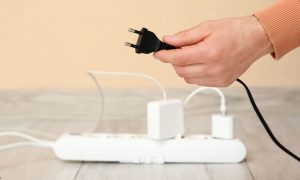Everyone thinks about hiding money at some point. Some do it for emergencies, others for security, and a few just for privacy. Banks are reliable, sure, but there’s always that lingering thought: what if I need quick access to cash?
People have been hiding money for centuries. From stuffing bills under loose floorboards to sliding coins inside books, history is full of clever tricks. But thieves have also become wise to the obvious hiding spots. A mattress, for example, is practically an invitation. A jewelry box? That’s the first place anyone looks.
So, where do you hide it? The answer lies in using creativity and blending cash into the fabric of your everyday life. Let’s walk through some of the best, most overlooked places where money can rest unnoticed.
In Your Aquarium

Aquariums often sit in living rooms as calm, decorative features. Nobody suspects them of doubling as a hiding spot. And honestly, who wants to dig around a tank of fish?
That’s why aquariums can be brilliant. Bills can be rolled tightly, sealed in waterproof plastic, and tucked into decorative rocks or fake castles. A filter compartment or hollow ornament works just as well. Because fish tanks require constant water circulation, burglars rarely meddle with them. They worry more about getting caught than fishing for your cash.
There’s also a psychological layer to this. People tend to respect pets. Even thieves hesitate to disrupt something that might harm an animal. That reluctance gives your stash a better chance of survival.
Of course, moisture remains the real risk. Without proper sealing, dampness will destroy bills faster than you think. Airtight bags or plastic capsules are a must. If you’re careful, the aquarium can protect both your money and your peace of mind.
The Flush
Now let’s head to one of the least glamorous places imaginable: the toilet tank. Don’t confuse this with the bowl—it’s the tank at the back that holds clean water.
The idea is simple. Wrap your bills in waterproof plastic and slip them inside a floating container or tape them high above the waterline. Few people ever check inside toilet tanks, and even fewer burglars are willing to roll up their sleeves to do so.
This hiding place has stood the test of time. In old crime stories, smugglers often stashed small valuables here. The reason? It’s unappealing, unremarkable, and hidden in plain sight.
Still, risks exist. If a plumber comes by, your secret may be discovered. Repairs or leaks can also ruin the plan. That’s why this shouldn’t be your only hiding spot. It works best as one piece of a layered strategy. Think of it as your “last resort” location.
Remote Controls and Battery Slots
What do most homes have too many of? Remote controls. Old ones, new ones, some long forgotten in drawers. That makes them a perfect hiding place.
Here’s how it works: remove the batteries, fold bills neatly, and slide them into the compartment. Replace one battery on top to keep appearances intact. To anyone else, the remote looks ordinary. They’ll press buttons, shrug at dead batteries, and toss it aside.
The genius of this method lies in its invisibility. People don’t value remotes. They’re seen as plastic clutter, not worth a thief’s time. Unless you pick the one you use daily, your money will stay untouched.
An even better trick is using remotes for outdated devices—old DVD players, broken stereos, or retired game consoles. Nobody pays attention to those anymore. They just gather dust, hiding your money in the open.
Normal Everyday Items
Sometimes, the best hiding place is the most boring one. Thieves, after all, operate in a rush. They don’t want to rummage through bags of flour or detergent containers when a jewelry box is sitting nearby.
That’s where everyday items shine. An empty shampoo bottle can disguise rolled bills. A cereal box, once resealed, looks like just another breakfast choice. Even mismatched socks at the bottom of a drawer make for surprisingly effective hiding spots.
The secret is authenticity. A hiding spot must blend seamlessly with your home’s natural rhythm. If something looks untouched or staged, it draws suspicion. But if your detergent bottle sits half-full on the shelf, it’s invisible.
Think about it: who would dig into a box of baking soda or a dusty cleaning bottle? Most burglars want electronics, cash envelopes, or flashy items. Ordinary things bore them—and boredom is your greatest ally.
In a Dark Bottle
Dark bottles carry an aura of mystery. Whether it’s wine, olive oil, or a decorative glass piece, the contents are almost impossible to see. That makes them great hiding spots.
Slip tightly rolled bills inside and let the dark glass conceal everything. To the casual eye, it’s just another bottle. Place it among several others, and it disappears completely.
For extra security, reseal the cork or cap. A melted wax seal works beautifully—it looks untouched and natural. If you’re crafty, you can even refill the bottle with a small amount of liquid to throw off suspicion.
The key here is blending. Wine racks, kitchen counters, or bar shelves are cluttered spaces. Bottles sit together, creating camouflage for your stash. Just be careful during parties—nobody wants their “hidden treasure” accidentally poured into a glass.
False Bottoms
False bottoms are the classics of secret storage. For generations, people have relied on them to hide money, jewelry, and small valuables. Why? Because they’re almost impossible to detect without close inspection.
A false bottom is exactly what it sounds like: a hidden compartment beneath an ordinary surface. A drawer might have a shallow section above the real bottom, creating space underneath. From the outside, it looks completely normal.
Crafty homeowners build these themselves. A little DIY skill can transform furniture into secret safes. Modern products also mimic this trick. Hollow books, soda cans, and even deodorant sticks with hidden compartments are sold online.
The beauty of a false bottom lies in its psychology. Burglars search fast. They pull open drawers, glance at contents, and move on. They don’t have time to measure depths or dismantle furniture. That’s why a well-made false bottom can outsmart even determined thieves.
The Value of Mixing Strategies
No single hiding place is perfect. Every option has strengths and weaknesses. That’s why variety is essential.
Think of hiding money like spreading investments. Putting all your savings in one spot is risky. But scattering them across several locations reduces chances of total loss.
For example, stash some bills in a dark bottle, tuck a few inside a cereal box, and keep a backup in the aquarium. Each layer adds security. If one is found, others remain untouched.
This layered approach is what separates clever planning from careless hiding. It’s not about paranoia—it’s about preparedness.
Why Hiding Spots Matter
A close friend once learned this lesson the hard way. His apartment was broken into. The thieves grabbed a safe, his laptop, and jewelry box—all in under five minutes.
What they didn’t touch? The detergent box in the laundry room. Inside, he had $200 rolled in plastic. They ignored it completely. That cash helped him cover immediate expenses while waiting for insurance claims.
The story proves a simple truth: the boring and ordinary often provide the best protection.
Conclusion
So, what’s the best place to hide money? The answer depends on your home, habits, and willingness to be creative. An aquarium offers concealment. A toilet tank provides misdirection. Remote controls, everyday items, dark bottles, and false bottoms all bring their own advantages.
No hiding spot is flawless. That’s why variety works best. Spread your cash across different places. Keep it practical, believable, and accessible only to you.
In the end, hiding money is about peace of mind. It’s about knowing that in an emergency, you have a stash ready and waiting—safely hidden where nobody would think to look.
Also Read: 8 Money Mistakes That Are Keeping the Middle Class Broke
FAQs
Absolutely. Most burglars search quickly and don’t dismantle furniture. A well-made false bottom remains unnoticed.
Skip the obvious: under mattresses, inside safes, or in socks. Thieves check these immediately.
Yes. Always use airtight bags or capsules when hiding money in damp environments like aquariums or toilets.
Cleaning containers and cereal boxes are excellent. They look boring and attract zero attention.





